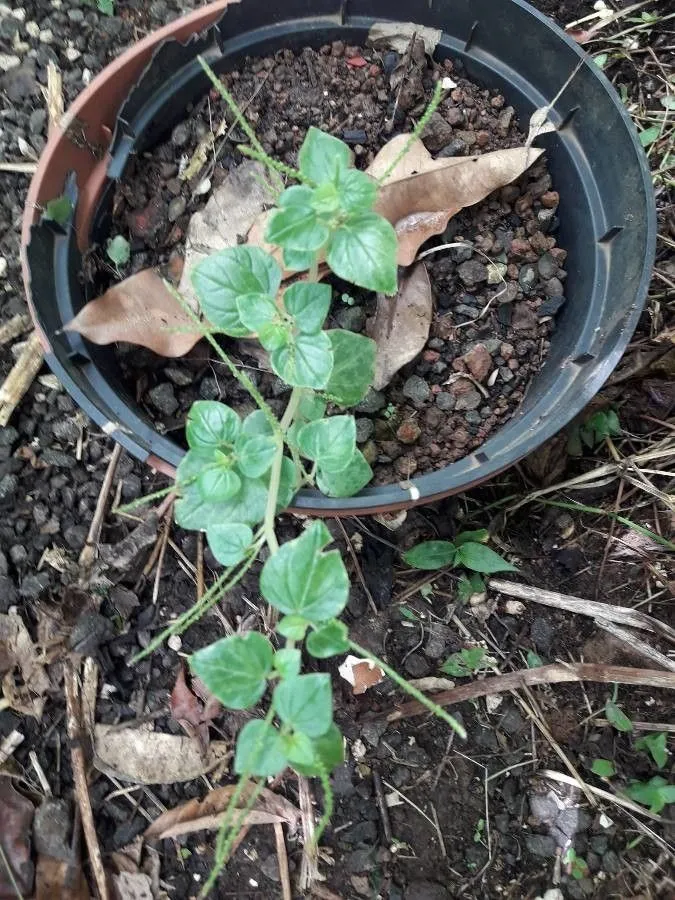
Author: (L.) Kunth
Bibliography: F.W.H.von Humboldt, A.J.A.Bonpland & C.S.Kunth, Nov. Gen. Sp. 1: 64 (1816)
Year: 1816
Status: accepted
Rank: species
Genus: Peperomia
Vegetable: False
Observations: Trop. & Subtrop. America, Trop. Africa, Madagascar
Man to man, scientifically known as Peperomia pellucida, is a fascinating plant belonging to the Piperaceae family. Originally described in 1816 by notable botanists F.W.H. von Humboldt, A.J.A. Bonpland, and C.S. Kunth in “Nov. Gen. Sp.,” Peperomia pellucida has captivated plant enthusiasts and researchers alike with its unique characteristics and widespread presence.
This intriguing plant thrives predominantly in tropical and subtropical regions, where it can be found gracing the landscapes of Tropical and Subtropical America, Tropical Africa, and Madagascar. Its ability to adapt to diverse environmental conditions highlights its resilience and ecological importance in these regions.
One of the striking features of Peperomia pellucida is its translucent, succulent leaves that exude a sense of delicacy and beauty. The plant’s leaves are often described as heart-shaped and fleshy, creating a lush, verdant appearance that makes it a popular choice for ornamental purposes. Its glossy surface and vibrant green hue add an element of freshness to any setting.
Aside from its visual appeal, Peperomia pellucida plays a significant role in traditional medicine across various cultures. In many tropical regions, it is revered for its medicinal properties, where it is utilized to address a range of ailments. The leaves and stems of the plant are often prepared as infusions, tinctures, or poultices, believed to possess anti-inflammatory and analgesic properties. This traditional knowledge, passed down through generations, underscores the plant’s cultural and therapeutic value.
Cultivating Man to man is relatively straightforward, making it an ideal choice for both novice and experienced gardeners. It flourishes in well-drained soil with moderate moisture levels, preferring shaded or semi-shaded environments that mimic its natural habitat. As a low-maintenance plant, Peperomia pellucida is an excellent option for indoor gardening, where its compact growth habit and minimal care requirements make it a delightful addition to any home or office space.
In summary, Peperomia pellucida, or Man to man, is a remarkable plant steeped in history and tradition. Its distribution across Tropical and Subtropical America, Tropical Africa, and Madagascar, coupled with its aesthetic charm and medicinal significance, makes it a plant of considerable interest and value. Whether admired for its ornamental beauty or cherished for its traditional uses, Peperomia pellucida continues to inspire and captivate those who encounter it.
Eng: man to man, water grass, icing grass, pepper-elder
Por: erva-de-jaboti
Swe: ogräspeperomia
En: Man to man, Pepper-elder, Rat-ear, Man-To-Man, Damuh-damuh, သဂါဗတာၚ်၊ တၞံ, Water Grass, Icing Grass, Pellucoid-leaved Pepper, Shiny Bush, Shiny Peperomia, Soldier pusley, Soldier-parsley
Bn: দীপ্ত লুচি পাতা
Zh: 草胡椒
Fr: Salade soldat, Salade soda
Ht: Zèb kourès
Jv: Sladanan
Ml: മഷിത്തണ്ട്
Fa: پپرمیا پلوسیدا
Pt: Erva de jaboti, Erva-de-jaboti
Es: Yayilla, Yerba de Sapo, Yuyillo
Su: Sasaladahan
Sv: Ogräspeperomia
Zh-tw: 草胡椒
Th: กระสัง
Zh-hant: 草胡椒
Vi: Rau càng cua
© copyright of the Board of Trustees of the Royal Botanic Gardens, Kew.
© copyright of the Board of Trustees of the Royal Botanic Gardens, Kew.
© copyright of the Board of Trustees of the Royal Botanic Gardens, Kew.
Taken May 30, 2020 by mahtab ali (cc-by-sa)
Taken Jul 15, 2019 by Jane Kevin (cc-by-sa)
Taken Mar 1, 2022 by LUCY Zaniboni (cc-by-sa)
Taken Mar 1, 2022 by Leandro Kelven Cavalcante (cc-by-sa)
Taken Mar 1, 2020 by flo soso (cc-by-sa)
Taken Mar 27, 2021 by Sébastien TRASBOT (cc-by-sa)
Taken Sep 14, 2022 by Antomar Alas (cc-by-sa)
Taken Nov 7, 2019 by Charles Blancher (cc-by-sa)
Taken Jun 12, 2021 by Prashant Gangal (cc-by-sa)
Taken May 14, 2010 by EOL − Marie Fourdrigniez (cc-by-nc-sa)
Taken Oct 29, 2019 by Herculano Sobrinho Almir (cc-by-sa)
Taken Feb 20, 2021 by Diniz Vick (cc-by-sa)
Taken Aug 29, 2019 by cabalceta Guillermo (cc-by-sa)
Taken Jul 23, 2020 by Corentin Loisel (cc-by-sa)
Taken Mar 15, 2021 by vergel (cc-by-sa)
Taken Jan 10, 2022 by Sébastien TRASBOT (cc-by-sa)
Taken Oct 1, 2009 by OTS – Oviedo-Brenes, Federico (cc-by-nc-sa)
Taken Oct 1, 2009 by OTS – Oviedo-Brenes, Federico (cc-by-nc-sa)
Taken Oct 12, 2021 by Kristof Melotte (cc-by-sa)
Taken Mar 27, 2021 by Sébastien TRASBOT (cc-by-sa)
Taken Oct 12, 2021 by Kristof Melotte (cc-by-sa)
Taken Oct 1, 2009 by OTS – Oviedo-Brenes, Federico (cc-by-nc-sa)
Taken Aug 8, 2019 by Pl@ntNet (cc-by-sa)
Taken Aug 5, 2020 by sumi marpaung (cc-by-sa)
Taken Mar 27, 2021 by Sébastien TRASBOT (cc-by-sa)
Taken Oct 1, 2009 by OTS – Oviedo-Brenes, Federico (cc-by-nc-sa)
Taken Oct 1, 2009 by OTS – Oviedo-Brenes, Federico (cc-by-nc-sa)
Taken May 28, 2021 by Sébastien TRASBOT (cc-by-sa)
Taken Feb 4, 2013 by Tela Botanica − Chloe PIERRE (cc-by-sa)
Growth habit>: Forb/herb
Family: Myrtaceae Author: (F.Muell.) K.D.Hill & L.A.S.Johnson Bibliography: Telopea 6: 402 (1995) Year: 1995 Status:…
Family: Rubiaceae Author: Pierre ex A.Froehner Bibliography: Notizbl. Bot. Gart. Berlin-Dahlem 1: 237 (1897) Year:…
Family: Sapindaceae Author: Koidz. Bibliography: J. Coll. Sci. Imp. Univ. Tokyo 32(1): 38 (1911) Year:…
Family: Asteraceae Author: A.Gray Bibliography: Pacif. Railr. Rep.: 107 (1857) Year: 1857 Status: accepted Rank:…
Family: Fabaceae Author: Medik. Bibliography: Vorles. Churpfälz. Phys.-Ökon. Ges. 2: 398 (1787) Year: 1787 Status:…
Family: Aspleniaceae Author: (Cav.) Alston Bibliography: Bull. Misc. Inform. Kew 1932: 309 (1932) Year: 1932…